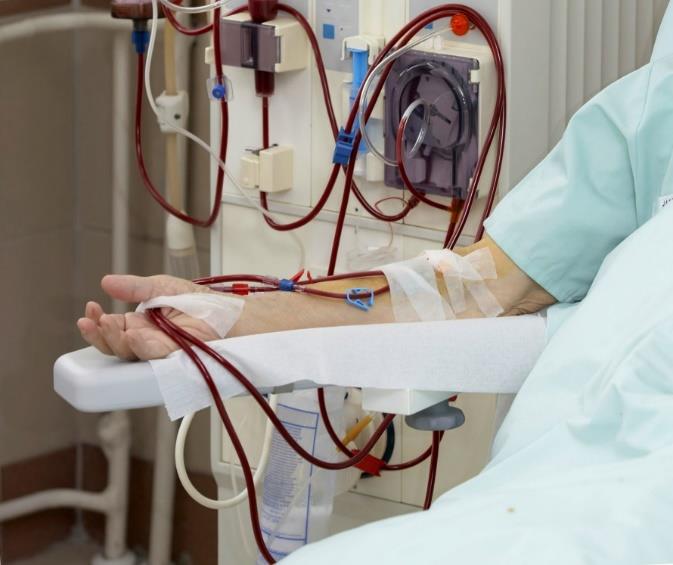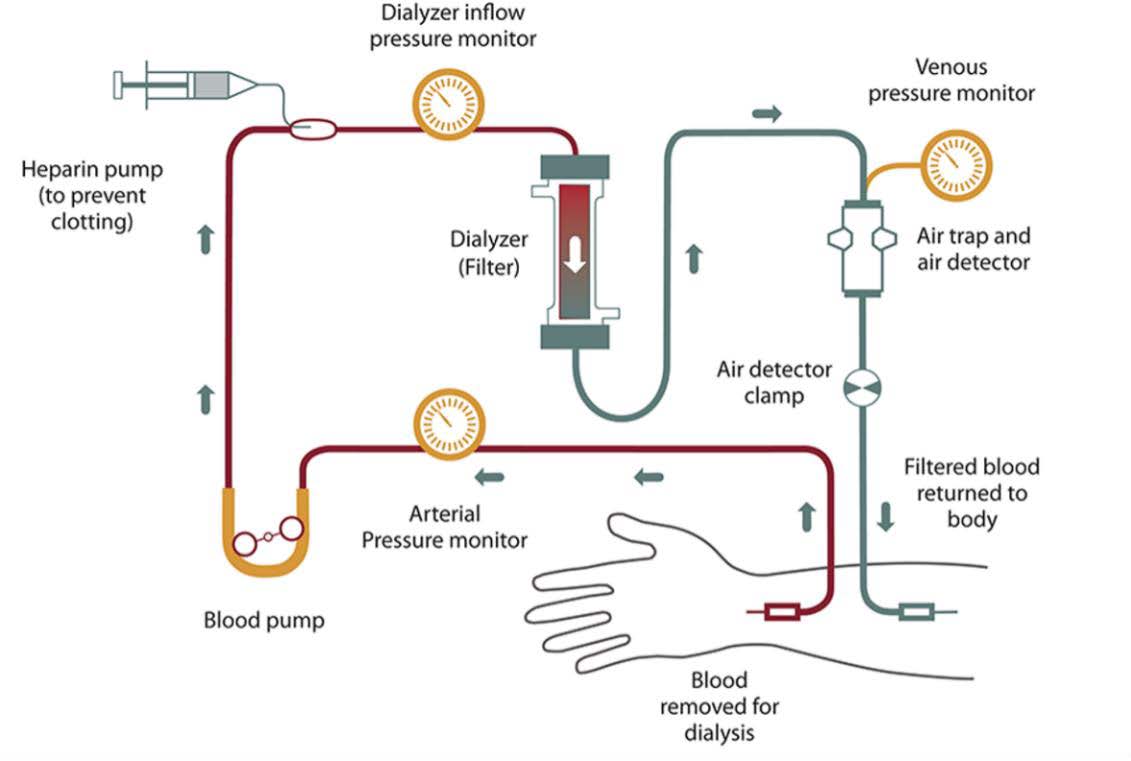Joseph R. Anticaglia, MD
Medical Advisory Board
I was saddened when a close friend and colleague informed me that he was diagnosed with lung cancer. He was advised of the treatment choices, and opted for a combination of radiation treatment and chemotherapy. After four months of treatment, I received another call from Daniel letting me know that his kidneys completely shut down due to the chemotherapy drugs. What’s remarkable is how he dealt with these two crushing blows.
After a period of frustration, and disappointment, he asked himself, “What am I going to do about it?” And the answer was loud and powerful, “I’m going to continue to work and experience living with my family and friends.” He loved being a physician, UCLA sports fan, the theater, fine dining, and traveling to name a few of his interests. And undergoing hemodialysis three times a week did not stop him from enjoying life.
Before traveling cross country to see a bunch of Broadway plays in New York City, he made arrangements in one of Manhattan’s hospitals to have hemodialysis three times a week while he was on “vacation.” Dan even organized a London, England holiday where a group of his friends gathered to enjoy with him, the people, sites, food and theater. Oh yes, he had made arrangement to have hemodialysis three times a week at one of London’s hospitals. In conversations with Dan concerning his current situation, he simply said: “It’s another chapter in my life.”
Dialysis is a lifesaving medical procedure that duplicates and takes over the functions of the kidneys when they fail. It involves using a machine to remove waste products, toxins and excess fluid from the blood and returns nutrient-rich blood to the circulation. Dialysis works to keep safe levels of minerals and electrolytes in your blood, such as calcium, potassium sodium and bicarbonate. It can be done at a dialysis center, in a hospital, or at home.
Kidney failure can be an acute, sudden onset as in Daniel’s case; or chronic, and gradual, long-acting deterioration of kidney function. In stage five end stage kidney disease (ESRD), the kidneys function at only 10 to 15 percent of capacity, necessitating dialysis or a kidney transplant to keep the person alive…
There are two types of dialysis:

Types of Dialysis:
1) Hemodialysis (HD):
Hemodialysis is the most common type of dialysis procedure done in the U. S. It accounts for more than 80% of dialysis procedures. The dialysis machine uses a filter called a “dialyzer” that acts like an artificial kidney. The dialyzer filters, i. e., removes waste products, extra fluid, toxins, and harmful chemicals from the blood. The cleaned blood with its nutrients and electrolytes is returned to the body.
Hemodialysis requires the creation of an access point, which is the place where too needles are inserted during the procedure. Typically, a surgeon creates an AV fistula in the arm that connects an artery and a vein. The fistula causes the vein to become bigger and stronger.
Once the fistula has been established, and sufficient time allotted for it to heal properly, two needles are inserted into the vein. Two small tubes connect the needles to the dialysis machine. Blood passes to and through the dialyzer which cleans it and returns it into the blood circulation

Dialyzer acts like an artificial kidney -removes waste returns filtered blood.
2) Peritoneal Dialysis (PD):
Peritoneal dialysis does not use a machine, rather it uses the tiny blood vessels lining your abdomen, the peritoneum, to serve as a natural filter to clean the body of waste material and to perform other functions of healthy kidneys.
The first step is to make an incision near the belly button and insert a catheter through the incision into the empty space in the abdomen, into the peritoneal cavity. Next a dialysis solution is introduced and infused into the empty space in the abdomen. Waste products and excess fluid are drawn out of the blood lining the peritoneal cavity into the dialysis solution. The used solution is then drained out.
Risk Factors
More than 70% of cases of late stage chronic kidney disease in the United States is due to diabetes, or high blood pressure (hypertension). Other causes of CKD include a family history of kidney disease, medications — for instance, drugs used to treat cancer (chemotherapy), illegal drugs, chronic use of NSAIDs, kidney infections or cysts. Smoking and obesity increase the risk of developing late stage kidney disease and the need for dialysis.
Complications
Hemodialysis complications include hypotension, i. e., low blood pressure which can lead to dizziness and fainting. Patients may experience muscle cramps, itchy skin, blood clots and infection at the site of the arteriovenous fistula.
Peritoneal dialysis complications include inflammation of the abdomen’s inner lining, called peritonitis, which can cause belly pain and fever. Other potential complications are changes in blood sugar levels, hernia, potassium imbalance, weight gain, and infection at the site of the incision.
Dialysis is not a cure for kidney disease. The prognosis for patients on dialysis depends on many factors, such as one’s general health, adherence to treatment recommendations and accessibility to medical care. Incidentally, Dan was euphoric when he was able to urinate normally after being on dialysis for 14 months.
Dialysis is primarily used for end stage renal disease or acute kidney injury. Since the first clinically successful hemodialysis procedure in a human patient happened in 1945, millions of individuals worldwide with chronic kidney failure have benefited from this life saving procedure. It’s essential to follow your physician’s advice regarding diet, fluid intake, physical exertion, and treatment recommendations.
Glossary
NSAIDs are non-steroidal anti-inflammatory drugs.
Dializer acts like an artificial kidney
Willem Johan Kolff working in the Netherlands, in 1945 achieved the first clinically successful hemodialysis in a human patient.
As of December 31, 2023, The United states has 518,070 patients on dialysis and 293,725 with a functioning kidney transplant.
References
- National Kidney Foundation; Hemodialysis
- NIH. National Institute of Diabetes and Digestive and Kidney Diseases — NIDDK; Hemodialysis, January 2018
- NIH. National Institute of Diabetes and Digestive and Kidney Diseases — NIDDK; Peritoneal Dialysis; January 2018
- C W Gottschalk 1, S K Fellner; History of the science of dialysis; Am J Nephrol. 1997
- National ESRD Data as of December 31, 2023:
- Joseph R. Anticaglia, MD; The Remarkable Kidneys — How Do They Work To Keep Us Alive? Doctors Column HC Smart, November 15, 2023
- Joseph R. Anticaglia, MD; The Kidneys, Unsung Powerhouses — How Do They Keep Us Alive?
- Doctors Column HC Smart, November 25, 2023
- Joseph R. Anticaglia, MD; Chronic Kidney Disease Insights — Unraveling the Five Stages of CKD; Doctors Column HC Smart, May, 2024
This article is intended solely as a learning experience. Please consult your physician for diagnostic and treatment options.

